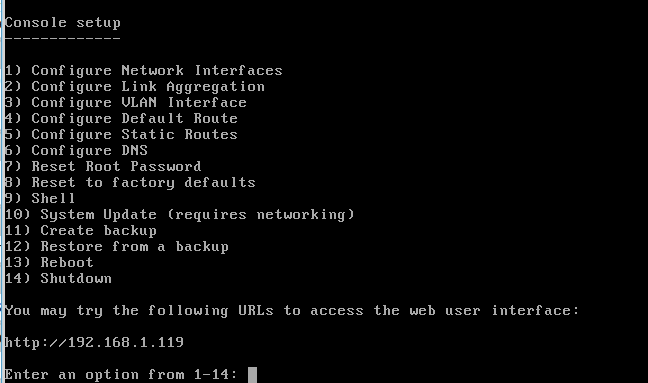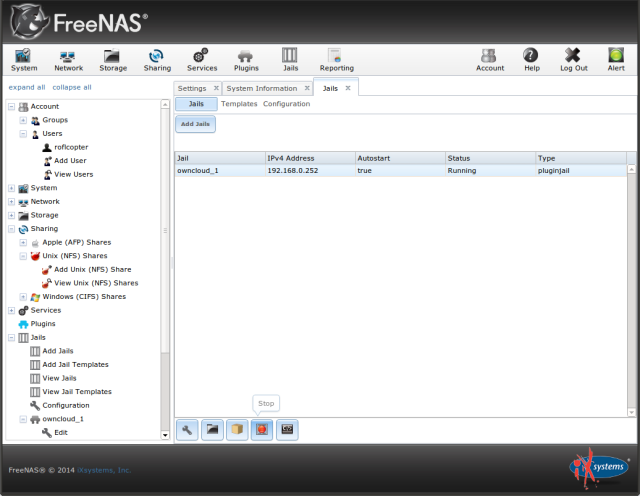
Now you can point your browser to and enjoy the new ownCloud Web frontend that comes with the ownCloud Infinite Scale tech preview…. Enjoy! You just installed ownCloud Infinite Scale on a Raspberry Pi Also should I run a FreeNAS box, or OwnCloud, as I want all of my devices to have access to data and such, but don't know if file transfers will be slow if I use a cloud, so I just need yours guys help, as I am pretty new to this. # Let ocis know that etcd is used instead of mdns I called it startocis.sh and it contains: Now let’s create a little start script for ocis. Get the ARM build from the download server: Download the ownCloud Infinite Scale tech preview binary and start it For that to work, you would need to make sure ahavi-daemon is installed and started. Note that this step is not neccessary, you could also go for the default, which is mdns. So, at the end of /etc/default/etcd, we need to add the line
#Freenas owncloud install#
Install etcd for registryĪs I wanted to go with etcd instead of mdns for service registration, I had to install etcd:īut for some reason etcd needs some fixes that are described here:
#Freenas owncloud update#
Sudo apt-get update & sudo apt-get upgrade 2. Install Raspberry Pi OS Lite and update itĭownload the image, put it on a card (do not forget to enable ssh by creating an empty file on the boot partition) and boot the Pi.
#Freenas owncloud full#
Para instalar este sistema es necesario un disco o pendrive, nosotros nos inclinamos por hacer la instalacion desde un pendrive de 8Gb, y utilizamos. We have also seen that NAS servers are really versatile, they allow us to have a network storage system, to which you can add multiple more services, including file synchronization, either with the software of the manufacturer of the NAS server itself, or directly using Nextcloud or Owncloud on the NAS, using full virtualization or with Docker.

Para empezar primero debemos instalar el FreeNas que se puede descargar fcilmente desde su pagina oficial. It means there is just one file to download and start! With that, starting the ownCloud Infinite Scale tech preview on a Raspberry Pi is as easy as: 1. En esta oportunidad, encaramos un proyecto que se basa en instalar Owncloud en FreeNas. Let us start it on the bare metal making use of the ARM build. That provide features as:- Data Security D. It is a web based, open source and one of the well known central data storage management tool. It is freeBSD based and support CIFS, NFS, iSCSI, FTP, RSYN along with RAID support. Granted, ownCloud Infinite Scale can also be delivered through Docker, but why go complicated. Answer (1 of 2): FreeNAS is a Network Attached Storage operating system. You might have access to a CLI in Amahi, but I dont think so. (Plex + Owncloud + CrashPlan) as does FreeNAS by default (you have to install them on both, but they are listed by default as options). While that would not be such a good idea for production, running ownCloud Infinite Scale on a Raspberry Pi is a great way to get to know the upcoming ownCloud Infinite Scale platform. Owncloud: All of my pictures and documents will be in Owncloud, up to 500GB total data.

And the answer is yes, of course it does. With the ownCloud Infinite Scale 1.1.0 tech preview release is just out the door, people often ask if it is running on a Raspberry Pi as well.


 0 kommentar(er)
0 kommentar(er)
